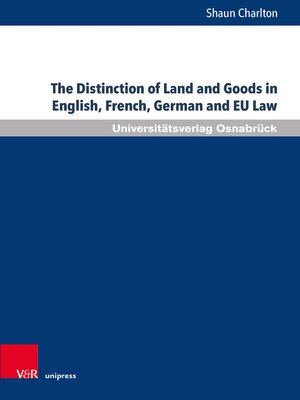The Distinction of Land and Goods in English, French, German and EU Law
ebook ∣ The Use of a Universal Classification Through the Example of Standing Timber and Other Things Agreed to be Severed from Land · Schriften zum Internationalen Privatrecht und zur Rechtsvergleichung
By Shaun Charlton

Sign up to save your library
With an OverDrive account, you can save your favorite libraries for at-a-glance information about availability. Find out more about OverDrive accounts.
Find this title in Libby, the library reading app by OverDrive.



Search for a digital library with this title
Title found at these libraries:
| Library Name | Distance |
|---|---|
| Loading... |
Most national law expositions leave a distinct impression of a naturalistic approach to the categorisation of property. The view advocated in this study is that the accession or severance of things to and from land as a 'natural scientific enquiry' based exclusively on blends of physical attachment to or socially-expressed intention in respect of land is misleading, or, at least, not decisive. National law accounts of the rules governing the distinction of land and goods need recalibrating to take account of the purpose, or the legal reasons, why land is being distinguished from goods. This is well illustrated by the example of standing timber, variously described doctrinally and in the national case-law as integral parts of land or (presently-existing or future) goods. Purpose of classification reveals the many nuances of competing policy considerations and, in turn, better reflects the law as it stands. The same principles may be applied to the case-law of the CJEU.







